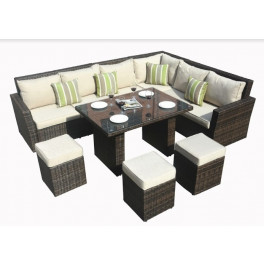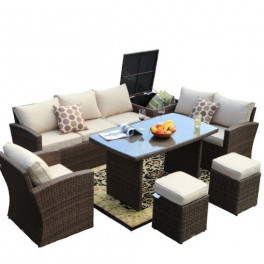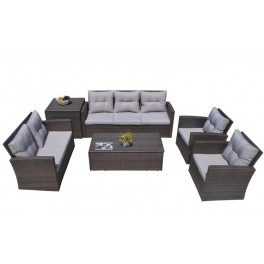There once was a great civilization that spoke a beautiful language. It was bountiful with culture and was a global, dominant force to be reckoned with. Alas, the language of Latin, and its civilization, the Roman Empire, are both amongst the sands of time. However, one custom that has not perished along with said culture is the Pergola. Here, at House Tipster, we provide the information and expertise you need and an in-depth analysis on the cost to build a pergola.
Once known to be used for walkways, passageways, and areas just for sitting, the pergola was the decorative arch that grew grapes and vines. Today, we use these posts and structures as decorations for decks and patios. Mainly a piece to cover the rays of sunlight from beaming down on us, the pergola is now the appliance that ties together the beauteous backdoors of our homes.
Table of Contents
An architecturally sound design that makes our backyards that much nicer, the pergola is an investment that many homeowners might turn away from. But if there’s even an ounce of that artist in you, asking you to purport your spirit and soul into your backyard, consider installing a pergola.
| Average Cost | $4000 |
| High-End Cost | $10000 |
| Low-End Cost | $1300 |
Material Cost
Many of the designs that you’ll draw up for a pergola involve wooden materials. The complexities are always what drives costs up the roof. A pergola is essentially a cover for your patio, as stated from above, it covers you. The pergola offers shade and helps protect your skin from the harmful rays of the sun.
There is a wide array of materials you may want to consider when choosing the kind of pergola you’re looking for. The two popular distinctions you can choose from are pine and red cedar. There are many different types of wood you can choose from, but the other two types of wood, other than the two mentioned, will be teak and mahogany.
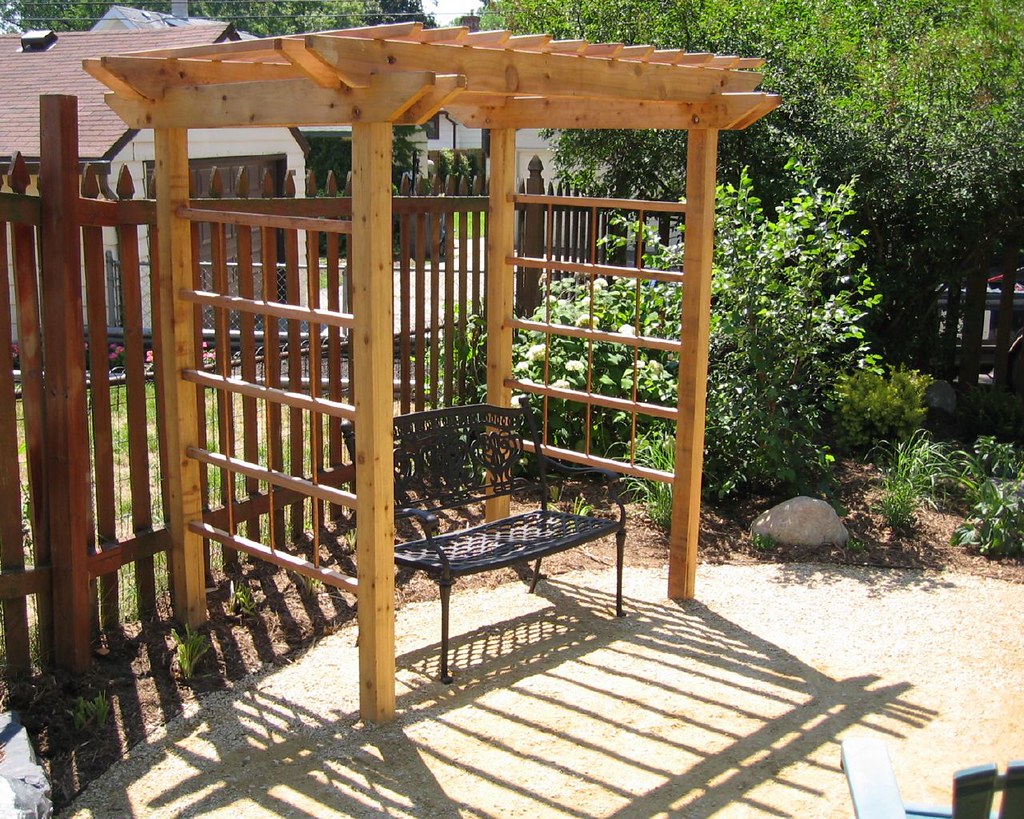
You’ll also have to consider the kind of pergola to watch out for. There are open-roof wooden pergolas, solid-roof wooden pergolas, or the kind you can just buy as a kit that’s already prefabricated. As always, check with your municipality to see if you’ll need a permit to build and install the pergola.
| Aluminum | $20 $30 per sq ft |
| Pine | $22-$30 per sq ft |
| Cedar | $25-$40 per sq ft |
| Teak | $55+ per sq ft |
| Fiberglass | $50+ per sq ft |
Cost of Size
Always keep in mind that materials are not the only essential price factors to apply to your spending costs. There is sizing of your pergola that really matters as well.
| Standard | 8 x 8 | $2,000 |
| Standard (a bit bigger) | 10 x 10 | $3,000 |
| Medium size | 12 x 12 | $4,350 |
| Larger size | 20 x 20 | $12,000 |
Aluminum or PVC
Aluminum pergolas are most likely your best choice if you don’t have enough in your budgetary planning. Like any pergola choice, the aluminum kits have resistance against the elemental forces of nature and the kits provide a pest-control feature. With minimal requirement to maintain the material, your pergola could last up to 60 years before you have to replace it.
There are retailers who sell kits with lifetime warranties, but carefully research not only the kind of pergola you want, but also find out the pergola’s longevity. Although there isn’t as much enjoyment of just buying a pergola kit, you can save a lot of time and money by going to a retailer.
Maintenance involving PVC, vinyl, or aluminum is extremely easy. It’s inexpensive and the work you’ll need to apply for both installation and maintenance is relatively simple.
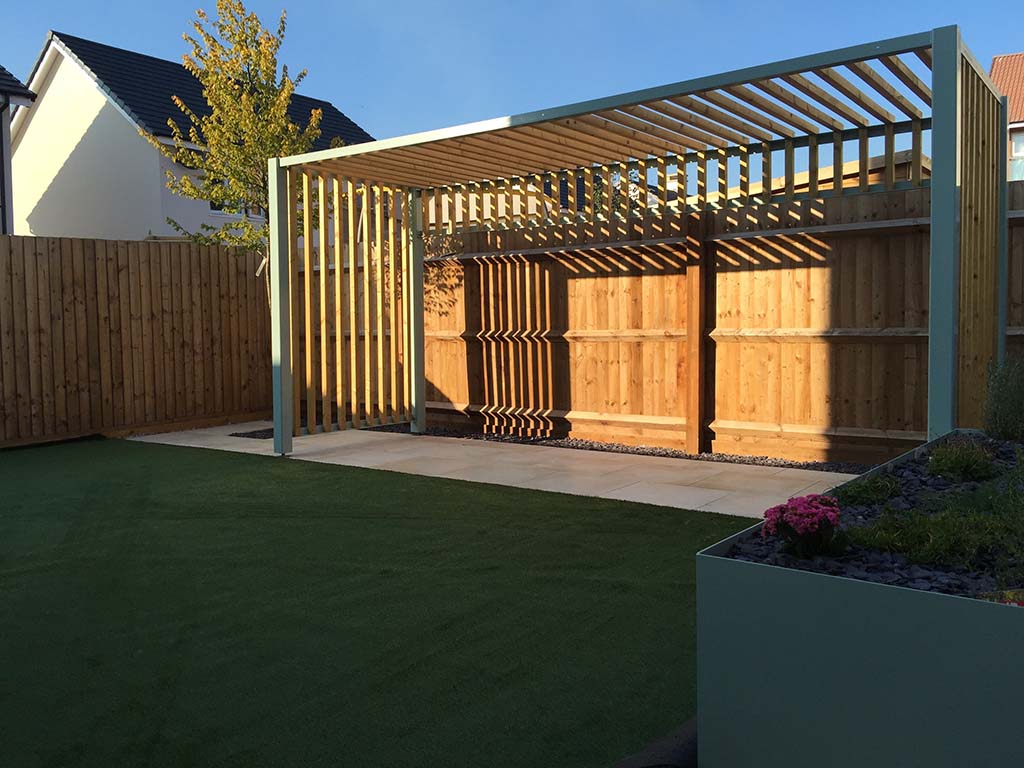
Pine
Pine is a wondrous material used for many different purposes and more importantly, many different projects. It may be your most affordable choice in starting a project of this size, especially if your project is small. The added benefits that come with pine is the resistance it has against pests and deterioration. The chemicals that are used to preserve the wood ensures the reputation pine has with protective agents.
The discoloration does set in if you do not water seal or stain it. But even if the color of your pine does begin to fade, you’ll need to wait a few months before actually staining or painting your material. Due to the saturation pine has when purchasing the wood, you can’t begin that process until after those few months.
Cedar
Although cedar has the same benefits and qualities that pine has, the appearance of cedar is appealing to the eye. It’s color is unique because of the light amber color it provides. Even the fragrance in cedar is appealing, so you’ll not only be seeing it’s great qualities, but also smelling it too. Imagine if you could grow vines to make a grape garden with your pergola, the scents that could spread around your backyard.
Cedar is also a lightweight material with close, even grain. The finish you’d apply to it would have no difficulty so long as you have some expertise and experience in carpentry. If you don’t have any experience, you could probably still check out the DIY guide below to see what you’d need to fulfill your dream garden. Let’s say you have a bigger budget and don’t have much time on hand, you can even hire a carpenter to perform those jobs.
Teak
Teak is a premium quality wood that is seasonal. It requires you to check on the availability of the material during the seasons. You should specifically inquire about its availability within the region you live in. Teak is exemplary for the beach house or a home with a coastal atmosphere, so if you’re considering teak as a building material, you should keep that in mind.
Historically, teakwood has been used to build luxury ships and boats. It’s usage also includes building high-end outdoor furniture, exactly like teak. The wooden material is definitely not for people who have small budgets. In most cases, teak needs to be shipped from other parts of the world and there’s precision involved with milling the material. But in those cases with people that have a budget by the thousands, its beautiful qualities overshadow the cost.
Fiberglass
There is quite a lot of money that can go into fiberglass materials. The price can range from $3500 to $8000 based on the size of the pergola, the more material you need, the more money it will cost. It has all your basic needs in mind, but it has another added benefit of avoiding the absorbance of moisture. One thing to keep in mind is that cold temperatures negatively impact the quality of your fiberglass.
Modern, Contemporary, or Rustic
The sleek and boxy look of a modern design can be the epitome of outdoor appearances.
If you have a pool in your backyard, there needs to be a style that matches the design.
Reclaimed wood is what you’ll need to focus on with a rustic design style. But modern and contemporary styles can be interchangeable. Most designs rely on geometric posts or designs of simple straight lines.
Access the accessories for your backyard. There are decor ideas that you can utilize for your pergola. The cost of accessories to add to your backyard is entirely up to you. Since this is more like adding a little extra sprinkles to your sundae, there is more of a minimal cost that won’t really be in the frame of concern.
If you finished your project and you want to spruce up your backyard, you can hang a chandelier or a painted metal lantern. Hanging shades can really improve the aesthetics, and natural shade protection like vines.
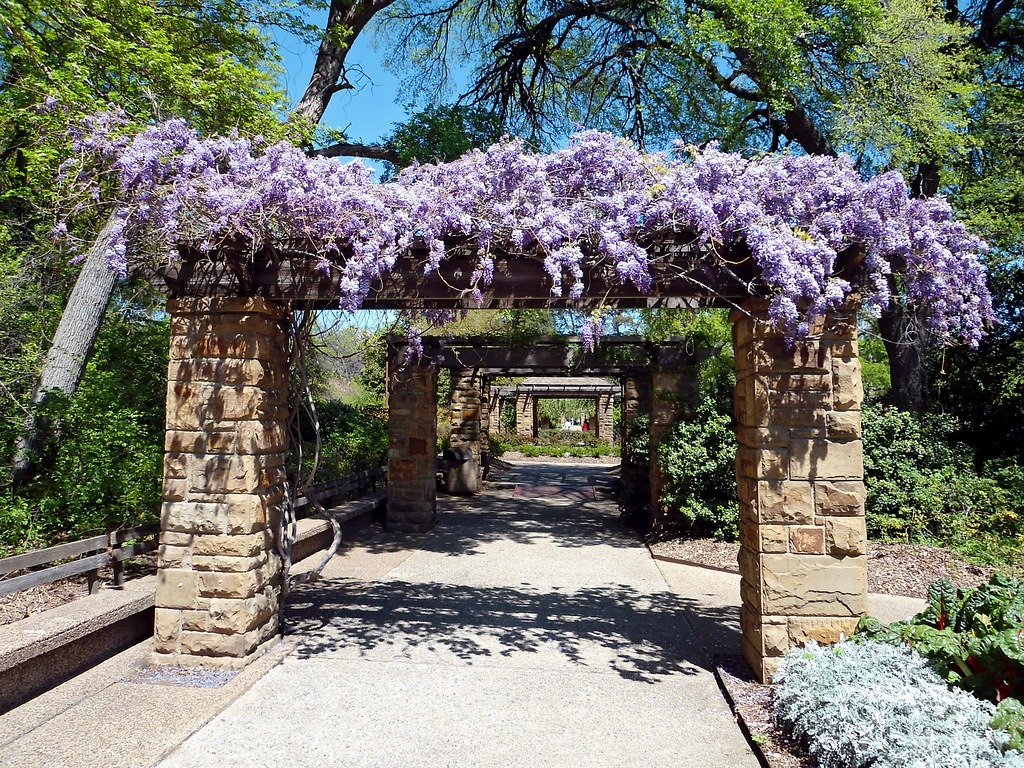
Labor Cost
The planning, the tools, the blueprints, the set up, the assemblage, and many more things to consider factor into labor costs. Again, although you can take the time to do all this, some pergola projects may require three people. At the low-end average, labor costs can vary into $1706. Ath the high-end average, your labor costs can round up to $4074, instead. There are some jobs that will require 44 hours or a longer time frame. But if you can afford the time and the money, the look and feel of your project will be effective in the long-run.
How to Keep your Wooden Pergola from Cracking
Any hardwood material you decide to use to build your pergola will need protection from prolonged exposure. Although most of the pergolas listed in this article are weather-proof, they always have the risk of cracking. Dry air can be damaging to your cedar pergolas because the material can absorb or release moisture. To prevent these things from happening, you can apply a polyurethane or varnish coating.
How to Save Money
It’s obvious to say that the material makes up a good portion of your budget. The least materials you’ll require and the cheaper materials you choose, can really affect the compromise of your costs. Instead of high-end materials, focus on the low-end materials listed above. Choose prefabs or if you’re thinking of installing a pergola yourself, consider the option of aluminum or pine.
One piece of advice is to look for installation options during the fall. The summer is the season that most homeowners look into installing seasonal items. Like apparel, clothing can change in price depending on the seasons you choose to find sales. It’s the same application of budget in the involvement of pergolas.
Retractable Roof Cost
Adding a roof can increase your spending budget. So, if you want more of an outdoor feel for your pergola, think about installing a retractable roof. Although that defeats the purpose of creating shade, a retractable roof helps you look at a star-filled night sky. With the per-square-footage method, the cost of a retractable roof averages into $4.50 per square foot.
Louvered Roof Cost
Through a series of angled horizontal slats, your pergola can have a roof that both screens out the sun and the rain. These roofs also can emit a sense of light and air, while keeping out the summer showers and heat. There’s a more solid structure that comes along with louvered roofs for your pergola. The average cost to install a louvered roof for your pergola averages out to $85 per square foot.
Foundation, Trellis and Fencing Cost
The foundation of your yard can be very significant to your spending matters. There are considerations like whether you want a level floor for your pergola. Like concrete patios, you’ll need that stability to build a pergola atop the stable ground. Installing a concrete foundation can average the price up to $9 to $12 per square foot.
Open frameworks can be that much more appealing for your pergola. Trellis can create an impact and is a substitute for a concrete patio. This architectural design runs out a walkway with an average of $100 to $1500. By finding a professional, you can even customize your trellis path. But remember, the expenses will be driven up.
The fencing on a trail or trellis, on average, can cost around $4 to $30 per square foot. A fencing professional can give you a better estimate, and to save up your budget, ask for multiple estimates from the professionals you’re considering to hire.
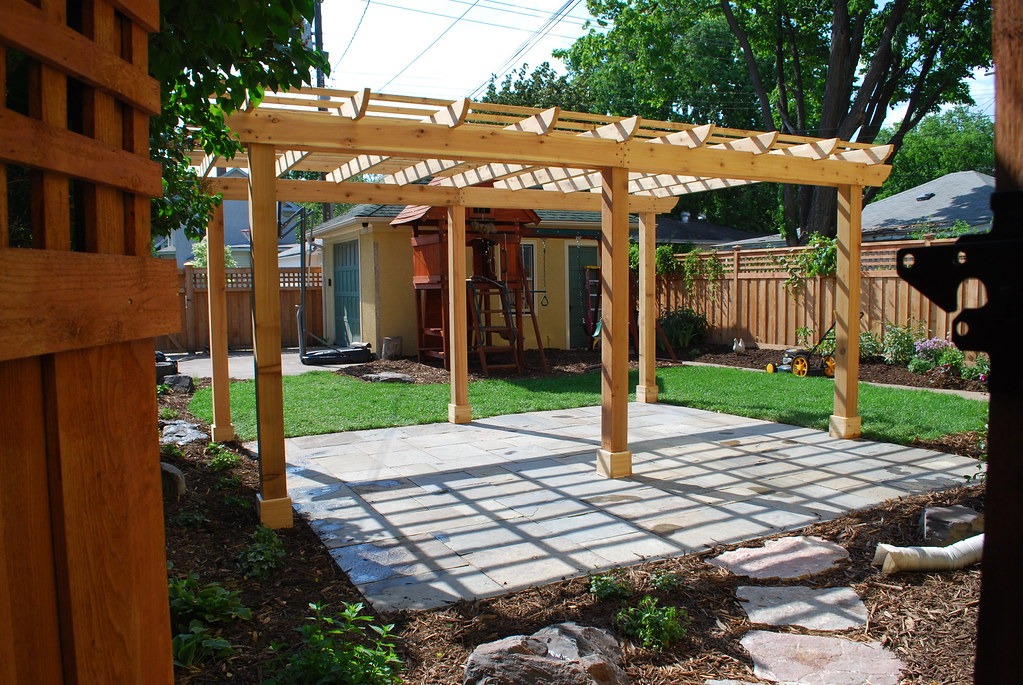
DIY Guide and Cost
The price range for prefabricated pergolas can range from $100 to $500. DIY kits can cost, at the low-end can cost about $600, and at the high-end can cost about $5000. This all again depends on your project’s size and materials. Remember this isn’t a professionally installed pergola, so if you have questions about the construction, it is best to inquire with a contractor or professional.
- Research the kinds of decisions you’ll need to make to start your pergola project. Either hire an architect or a contractor, and you’ll have some assistance in understanding what kind of design you’re looking for. If you wish to save money, you can find design ideas online.
- Permits will most likely be required. You should seriously look into your municipality codes and standards.
- To apply for permits, they’ll require your needs and designs. Any permit application will need you to bring blueprints and designs you’re working on.
- Purchase your tools and supplies. If you already have your tools ready, then you won’t have to worry about such costs, but you’ll definitely need the supplies. Throughout the process, measure out everything into the right size and keep your building blocks level.
- By painting your wood with primer, you’ll have the appearance of a natural pergola.
- The installation of your pergola starts with footings and posts. Most contractors will advise you to pour in cement by digging in the posts about four feet deep. There is framing involved when pouring in concrete so check out more information on which concrete materials you’ll need.
- Finally, building rafters is the process of placing whichever sizing choices you have for your rafters and keeping them evenly spaced. You can use a standard 4x4 or a 4x6 sized rafter.
The cost to paint or stain your pergola can average up to $2 to $5 per square foot. Although it doesn’t seem to be an essential factor in your installation, you can think of it as smaller costs to consider.
Cost of Pergola-Related Items
Besides the idea of installing a pergola and whatever accessories you’re thinking of installing, you should also think about the attachments involved. Whether it’s a patio cover or a Cabana, this is a cost chart on the average prices:
| Patio Cover | $8,300-$25,000 |
| Gazebo | $3,500-$9,500 |
| Pergola | $2,000-$6,000 |
| Trellis | $400-$900 |
| Arbor | $100-$1,000 |
| Ramada | $9,000+ |
| Cabana | $2,000-$5,000 |
How to Hire a Contractor
Now that you know more about pergolas, concrete patios, additional backyard installations and the costs of installing them, look into hiring a professional. Check out House Tipster, and find the perfect pro for your home repair needs. How much does it cost to build a pergola? Find out from professionals in your area.




